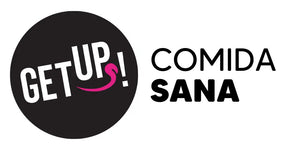Losing weight with the ketogenic diet, its risks and benefits
Savoring meat and butter 😋🍖: the desire of many is the basis of the ketogenic diet , also known as the Keto diet , to achieve rapid weight loss. But how does it differ from other diets and what are its possible risks?
 Keto Diet Macronutrient Distribution
Keto Diet Macronutrient Distribution
What exactly is the ketogenic diet?
The ketogenic diet is characterized by being low in carbohydrates, meaning that flours, starches and carbohydrates from vegetables, which are converted into glucose, are reduced. Instead, fat consumption is increased. Its premise is simple: instead of obtaining energy from glucose, the body obtains it from fats.
Our body uses glucose for energy. When blood sugar levels drop due to fasting, physical exercise or lack of food, the body changes its energy source and uses fat reserves stored in different parts of the body.
In cases of prolonged fasting, the ketogenic diet puts the body into a state called "ketosis," where it uses fats as fuel. The term "ketosis" refers to the production of "ketone bodies," fat-derived components that are vital for survival when sugars are scarce.
When sugar consumption is severely restricted, the body is forced to use all the glycogen stored in the liver. Once glucose is depleted, the body switches its "fuel" to burning fat. This process can take between two and four days and eventually induces the state of ketosis.
Different types of diets
The typical variant of the ketogenic diet is widely adopted. It sets a restriction on the amount of carbohydrates to be ingested, approximately 50 grams per day. This measure represents 10% of the total recommended daily calories. The other nutrients are distributed in 20% proteins and 70% fats. So, as mentioned above, 70% fats.
There are more rigorous alternatives to ketogenic diets. For example, some versions of the "Keto" diet reduce carbohydrate intake to just 2% of the daily food amount, protein to 8%, and the remaining 90% is made up of fats.
It is generally considered healthy for an adult to consume between 225 and 323 grams of carbohydrates per day, which is equivalent to 45% to 60% of the daily calorie intake. This is where the difference is seen. As an example, a small banana contains approximately 24 grams of carbohydrates, while a serving of boiled rice contains 45 grams.
 Keto Diet Strategy for Weight Loss
Keto Diet Strategy for Weight Loss
If the permitted limit of carbohydrates is exceeded, the state of ketosis is lost and the body resumes burning glucose instead of fat, thus interrupting the effect sought with the ketogenic diet.
If you read this article, it's because you're interested in eating better. To help you make the decision, we're giving you an incredible discount for your first purchase. Activate it by clicking here: https://getup.com.pe/discount/YOLEOELBLOGGETUP


